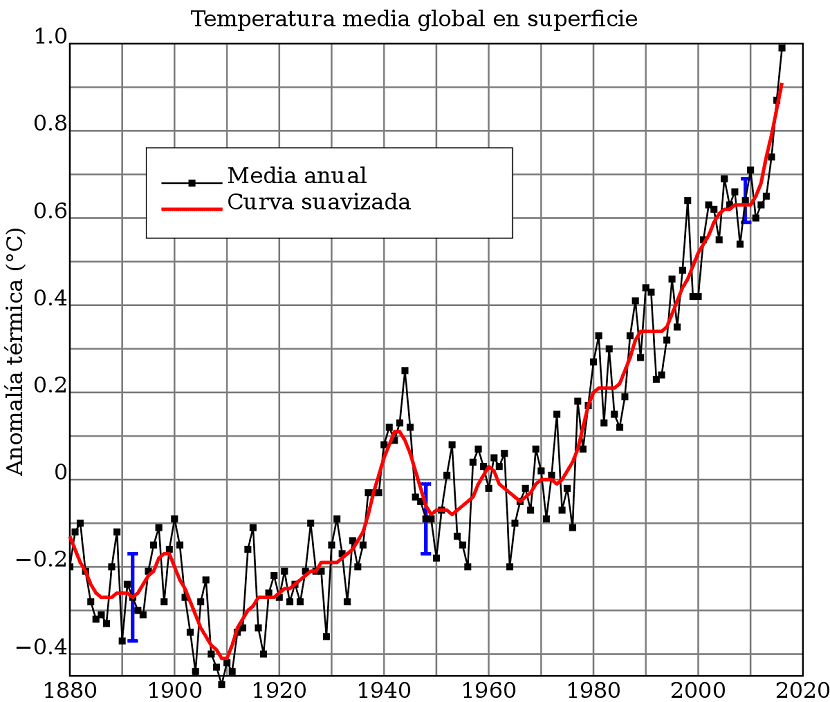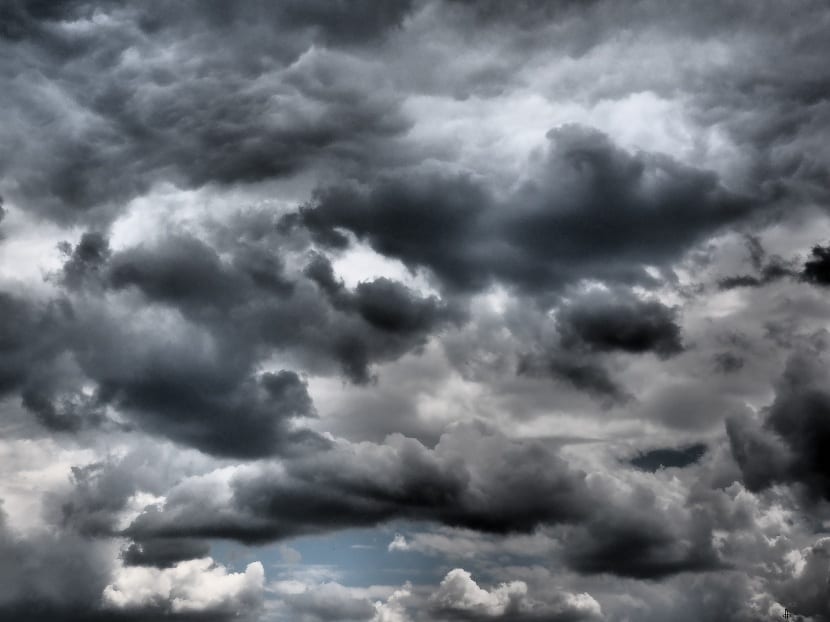
When we talk about the climate of an area we are referring to a set of meteorological variables that act at the same time to compose a certain environmental condition. There are many weather elements that act to shape it. It's easy to confuse concepts like meteorology and climatology. However, this is what we are here for. In this article we are going to teach you the main differences between these concepts as well as explain all the elements of the climate and their composition.
Do you want to know what are the characteristics that make up the climate of an area? Keep reading and you will find out everything.
Meteorology and climatology

When we talk about meteorology we refer to what is commonly known as the weather. Time is what it does today or tomorrow. That is, it rains, it is sunny, strong wind, high temperatures, snow, etc. This set of Meteorological phenomena they can be given at any time. Well, the set of all these phenomena over time is recorded as climate.
Therefore, climate is the sum of meteorological variables that take place over time and that make up the characteristics of a place. For example, the weather continuously in an area is the weather. Mediterranean climate it is characterized by having high temperatures in summer and colder and wetter winters. Rainfall they are concentrated in the winter months, while in summer it is drier.
These characteristics are what make up the climate of the Iberian Peninsula. In other words, the fact that one or two days we have rain does not define the climate of the area, but rather the total record of these precipitations over the years and years. Spain has an average annual rainfall that is around 650 liters per square meter. Generally, under normal conditions it should rain around this amount per year. It is totally normal that these data are not 100% accurate as there may be both rainier years and drier years.
These data are obtained as a total mean of the value of the meteorological variables and the rest of the data that are too far from the mean are not used to establish the mean value. That is, if a year is too rainy with rainfall close to 1000mm, it will not be used because it is not common.
Data register

Meteorological variables such as the frequency and intensity of the wind are also recorded over the years. Only lasting factors as is increasing the concentration of certain particles or pollutants in the atmosphere can modify the climate of a place in the long term. For example, climate changeAs its name suggests, it is a series of changes in meteorological variables over the years that makes the climate change.
The variable worldwide that is changing the most is temperature. Because of global warming due to excess heat retention by greenhouse gases it is causing an increase in temperature. This increase triggers, in turn, other effects on the rest of the meteorological variables that modify the climate. For example, rising temperatures change the humidity and rainfall in an area. By not having the same rain, the vegetation and fauna that sustains it also changes. These small changes have a synergistic effect on a large scale that changes the climate of an area.
The records are very important for the study not only of what is happening to us today, but it also helps us to know the climate that we had millions of years ago. Knowing the changes that the different climates of the world have suffered throughout history, we will be able to know what are the limits that we can establish without endangering the survival of the human race.
Factors that intervene in the climate

Apart from the elements of the climate we have the factors that condition it. Among them we find the altitude and latitude, the terrain, the water and the marine currents. All these factors intervene in one way or another in the characteristics of the climate of an area. For example, it is not the same amount of solar radiation that falls on the earth's surface at the equator as at the poles. The sun's rays strike perpendicularly on the line of the tropics, while at both poles they arrive inclined.
For this reason, the energy that makes both the earth's surface and the surrounding atmosphere heat is not equally distributed throughout the planet. The same can be said for altitude. For every 100 meters that we climb in altitude, the temperature drops by 3 degrees and with it, so does the atmospheric pressure. This makes environmental conditions conducive to another type of life development. There are not many animal and plant species that live at more than 3000 meters of altitude given the existing adverse conditions.
Lack of food, higher wind regime, little vegetation, etc. These are conditions that we find at altitude and that do not help at all in the development of biodiversity.
What are the elements of the weather?
With everything seen so far, we have to mention what the elements of the weather are.
Temperature

We start with the temperature. It is perhaps the most important variable globally, since it is the one that mainly conditions the development of life. It is the energy accumulated by the air and the ground. The temperature must have a range of values necessary for each species to develop and occupy a territory.
Clouds, wind and rain modify the temperature in addition to the amount of solar radiation that comes to the surface.
Precipitation, humidity and atmospheric pressure

Precipitation in a place is the water source of an area and the sustenance of the environmental humidity. Thanks to it, vegetation can flourish and create the runoff necessary for the existence of rivers, lakes, streams, etc. Part of this water is lost again in the process of evapotranspiration and gives rise to the different types of clouds.
Humidity is the amount of water vapor in the air. The measure of this is determined, as we have mentioned before, with the rainfall regime of an area. The more temperature and rainfall a region has, the more capacity the air has to hold water vapor.
Atmospheric pressure is that force exerted by the air on us and the earth's surface. You could say that it is what the air weighs. As we ascend in altitude, the atmospheric pressure is less and less.
Cloud cover, wind and solar radiation

The amount of clouds that are in the troposphere at any given time is also an element of the climate since it influences precipitation, the amount of solar radiation that reaches the surface and, therefore, the amount that allows it to return to outer space, etc. .
The wind is the movement of the air and determines some climate variables such as environmental humidity, changes in atmospheric pressure and contributes to the evaporation of water.
Finally, solar radiation is what gives heat to the earth's surface and the air. When solar radiation reaches the surface it is called insolation. This radiation is trapped by greenhouse gases and clouds.
I hope that with this information you can learn more about the elements of the weather.